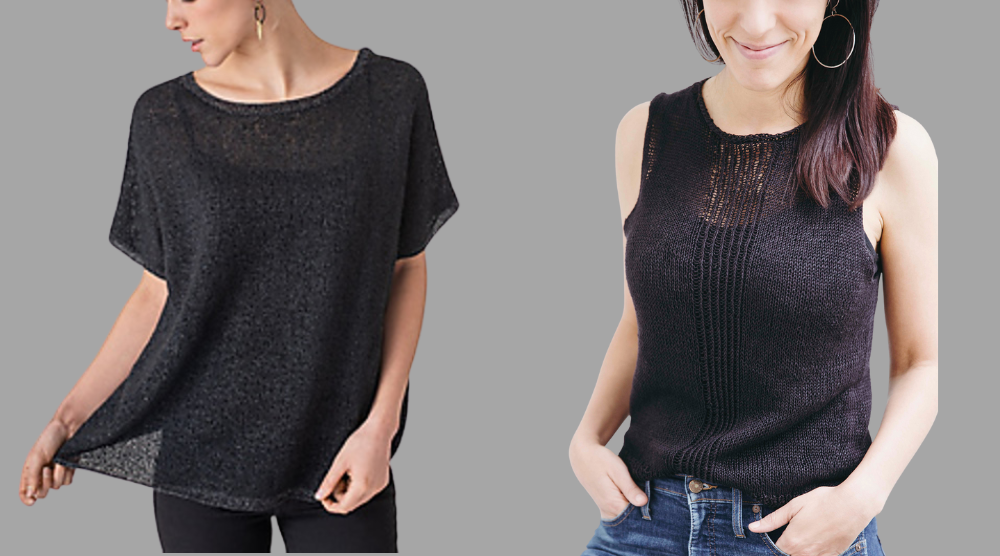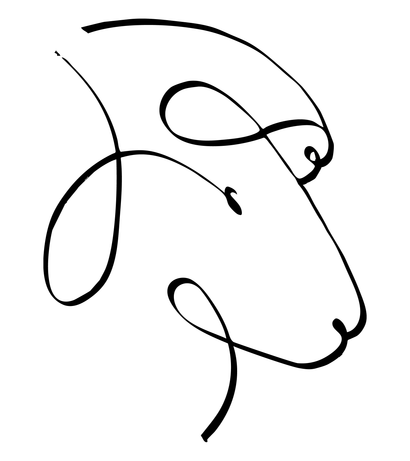Free shipping on all domestic orders over $150
Free shipping on all domestic orders over $150
Shop
Add description, images, menus and links to your mega menu
A column with no settings can be used as a spacer
Link to your collections, sales and even external links
Add up to five columns
Add description, images, menus and links to your mega menu
A column with no settings can be used as a spacer
Link to your collections, sales and even external links
Add up to five columns

Summer knits - choosing the right size
June 21, 2022 3 min read 1 Comment
When we get started on a garment, there are so many things to consider.
There are the fun things - What pattern will I knit? What yarn should I use? We all love this part. It’s exciting to choose a design and pick the yarn. It’s all about color and texture, fun stitch patterns and style. Who doesn’t love that?
Then there are the not so fun technical questions. Can I get gauge? What needle should I use? Do I like the fabric I get at this gauge? These are the questions that all have the same answer: You have to swatch it and see. You knew that was coming, didn’t you.
The question that we spend so little time considering is the one that actually makes the biggest difference in whether or not the sweater will fit you.
What size will you knit?
I wrote a comprehensive blog post on the topic of sweater fit, which you can read here, but today I want to talk about one specific aspect of fit: the fit of hot weather garments.
In my last post I talked about different kinds of garments to keep you cool - wearing garments that cover you up less and garments that float away from the body. The photo above shows an example of each of these. On the right is the Staple LInen Top, a sleeveless tank by Joji Locatelli, and on the left is Elan, a flowing dolman top with elbow length sleeves by Shelle Anderson. Both of these tops will be cool and beautiful to wear this summer, but the fit is obviously very different for them.
For the tank, I’m a huge fan of negative ease. I think it will look best with a tiny bit of stretch across the bust. Not so much that you look or feel uncomfortable, but enough to give a flattering shape. That’s how it’s worn in the picture. A moisture wicking fabric right against your skin (like linen, silk, or wool and their blends) will wick moisture away and allow it to evaporate so you stay cool and dry. .
On the other hand, the garment on the left is intended to be loose and flowing. Research shows that loose clothing creates airflow along your skin speeding evaporation and carrying off excess heat. So, while this garment has more fabric, it will still keep you cool. But you need to give it enough ease to create that airflow. For this garment, You could easily get away with 20” of positive ease on it.
So, should you measure your full bust and subtract an inch for the tank and add 20 inches for the Elan and then pick that size? Maybe, but not necessarily. Here’s how I would approach it.
For the Staple Linen Top and other close-fitting garments
- Find a similar garment in your wardrobe (a close fitting top), lay it out, and see how wide it is at the bust
- Double that number to get the finished bust measurement
- If you’re measuring a handknit garment, choose the size that’s closest the the finished bust measurement of the garment you measured
- If you’re measuring a machine knit garment, size up
For the Elan and other loose, flowing garments
- Measure your upper bust (above your full bust) and choose the size that is 18-20” larger than that measurement
- If you’re between sizes, size down
- Be sure to give yourself plenty of ease. For example, If your upper bust is 44, do not be tempted to knit the 54. You really do need a lot of ease in this style of garment. .
These two different methods for choosing size are important to understand, and once you do, you’ll find that you’re happier overall with the fit of every garment you knit.
Warmly,
~Ellen
If you enjoyed this article, please
Like this post? Sign up here to news and information about garments that are fun to knit and fabulous to wear delivered right to your inbox every week


Betty Knight
August 07, 2023
I always appreciate your articles about pattern size and fit. They have helped me so very much. I am so much more satisfied with my finished garment. Thank you